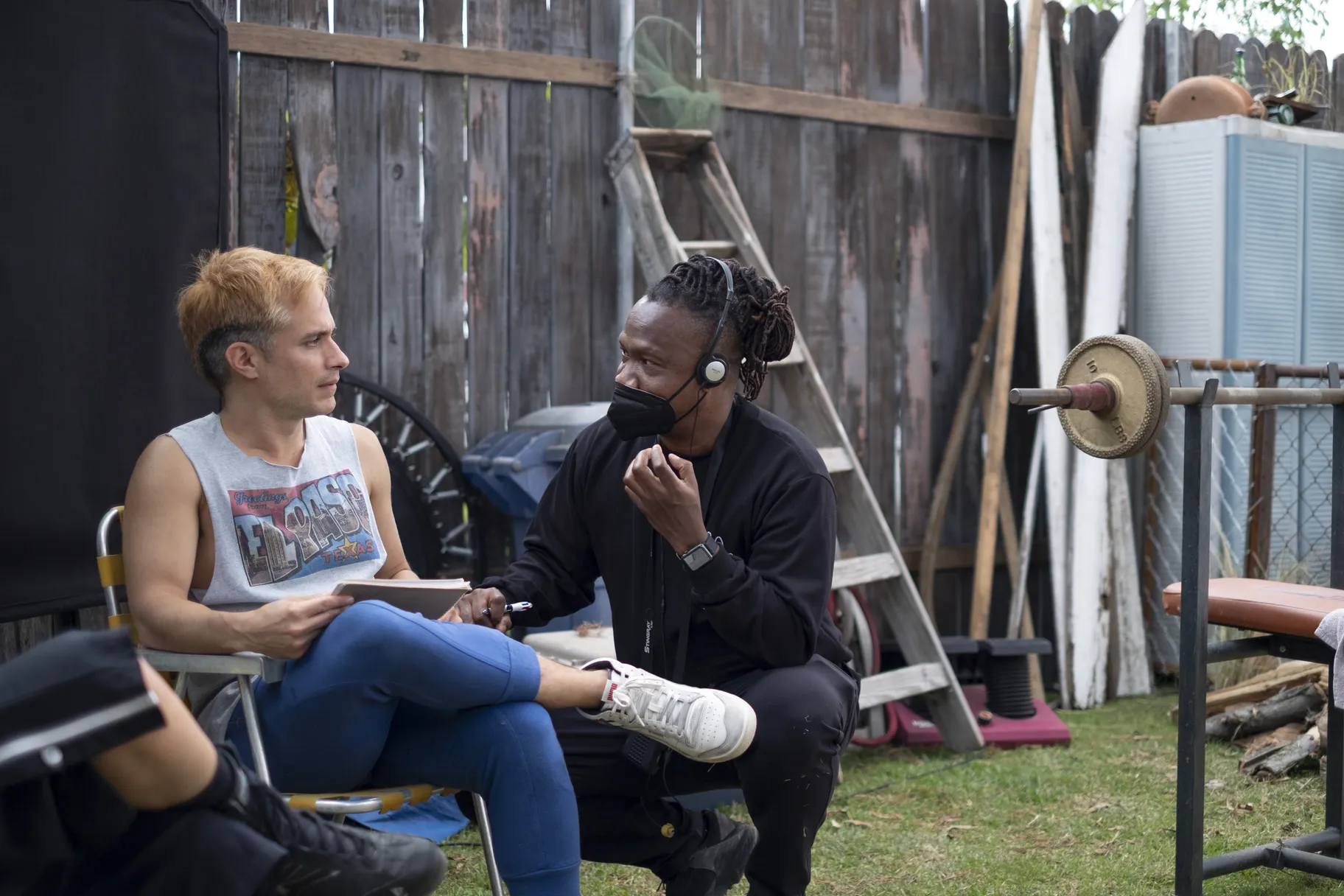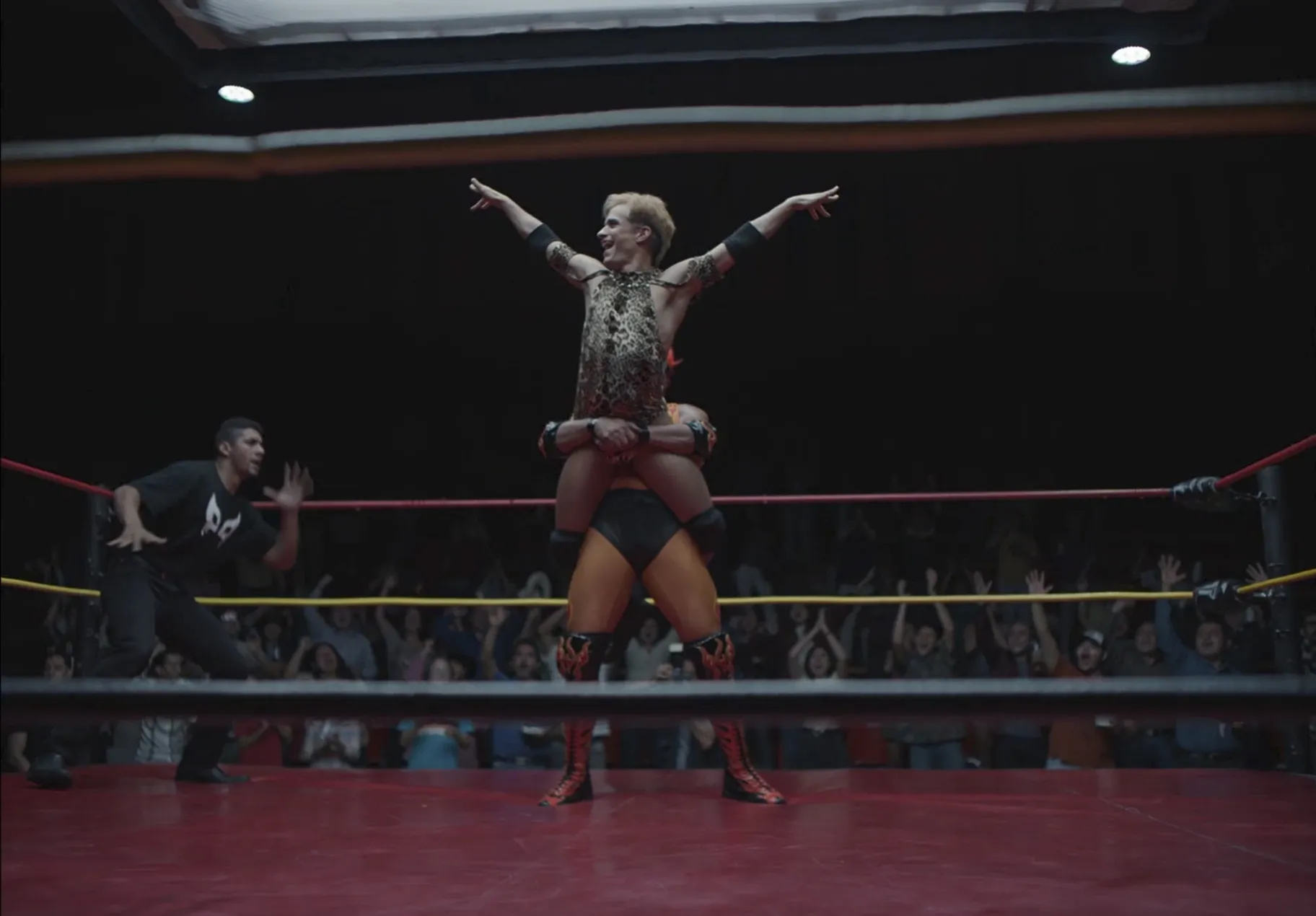You’ve likely seen pictures of the flashy mask-wearing wrestlers of Mexican lucha libre. Within that world are wrestlers called exoticos who dress in drag, serve as comic relief, and usually lose.
A new biopic looks at the life of Saúl Armendáriz, an exotico who changed the game. His stage name was Cassandro, which is the title of the new movie starring Gael García Bernal. Known as the Liberace of lucha libre, Cassandro was so popular that he was allowed to win matches. The movie captures his close relationship with his mother and with his closeted lover, a man who was married to a woman.
The writer and director of Cassandro is Roger Ross Williams, who won an Oscar in 2010 for Best Documentary Short. That made him the first African American director to win the award.
He went on to direct and produce many documentaries, including The 1619 Project, Life Animated, and Love to Love You, Donna Summer. His recent series, The Super Models, spotlights Naomi Campbell, Cindy Crawford, Linda Evangelista, and Christy Turlington. Cassandro is his first scripted feature film.
This project began as a short documentary for The New Yorker. Williams tells KCRW that when he met Cassandro at his house across the street from the U.S.-Mexico border wall in El Paso, Texas, “it was almost like love at first sight.”
Less than two hours into the interview, Williams knew he had to do more.
“A bolt of lightning hit me. And I said, ‘That's it. You're my first scripted film,’” he recalls. “I think that he started crying because he was like, ‘Really?’ And I started crying.”
That night, as Williams puts it, he went to a tequila bar with his crew and immediately started brainstorming over who could play Cassandro. “I was like, ‘Oh my God, Gael García Bernal. He’s the only one who could play Cassandro.’ And I never, never let that go. I stalked Gael for years.”
He says Bernal was a lucha libre fan, and once he agreed to play the role, he heavily researched Cassandro, watching endless YouTube videos and documentaries.

Roger Ross Williams (right) works with Gael García Bernal (left) on the set of Cassandro. Photo courtesy of Amazon Prime Video.
Cassandro spent his childhood in both El Paso and across the border in Juarez. At the time, people could easily travel between the two. “When he was growing up, they didn't even ask for a passport. They just knew him. So they'd be like, ‘Okay, go on through,’” says Williams.
The director says before any shooting began, he had dinner with Cassandro and watched him in a match the next day.
He recalls, “What happens is that the lights go down, and then … Cassandro’s theme song, Gloria Gaynor’s I Will Survive, comes on. And he comes out. … The whole stadium is singing I Will Survive — which is really powerful for a gay man to hear this and to see all these families singing this. JC Molina, who's a gay Mexican American man, his production designer, started to cry. And I started to cry. And that's what happened the first time I saw Cassandro come out and wrestle. … I was just: How is this happening? How is this effeminate gay man in drag, and the whole stadium in this macho world and culture of lucha libre, they're all singing I will Survive and loving this gay man? How did this happen?”
Lucha libre vs. American wrestling
Williams says lucha libre is the second biggest sport in Mexico. (Soccer is No. 1.) The luchadores wear masks, and the wrestling is theatrical, colorful, and performance-based. The moves are choreographed and almost like ballet.
“Families go to lucha libre matches, and they get to scream and yell and forget about all their problems. It's just a phenomenon.”
Similar to U.S. wrestling, the matches are staged, so the winners and losers are already determined, he points out.
Still, people need to be physically fit, he explains. “It is brutal. They stand on the ropes, they do these flips off of the rope. You land on your back and your side, and you break bones. The real Cassandro has broken almost every bone in his body. He's broken his back three times. … He was told he could never walk again, and he went right back to it. He would inject himself with a painkiller just to walk. He was always constantly in pain from all the injuries.”

“Cassandro” director compares lucha libre to a theatrical performance, much like ballet. Photo courtesy of Amazon Prime Video.
A “superhero” exotico
Exoticos’ presence in Mexican wrestling can be traced back to the 1940s. At the time, straight men typically played these effeminate roles.
“It was really homophobia in the ring. They would basically bully and beat up the gay guy. And he took the power back,” Williams says.
He points out that when people called Cassandro homophobic slurs or battered him backstage, he used those words as his power and won over audiences.
“He changed everything and he became a role model for so many queer kids all throughout Mexico. Cassandro used to be a luchador and he was hiding behind his mask. And really, that's the theme of the movie. It's ‘remove your mask, be yourself, be proud of who you are.’ And that's what he did. And he owned who he really is. And as soon as he did that, he realized that that was his superpower.”
